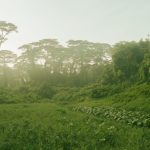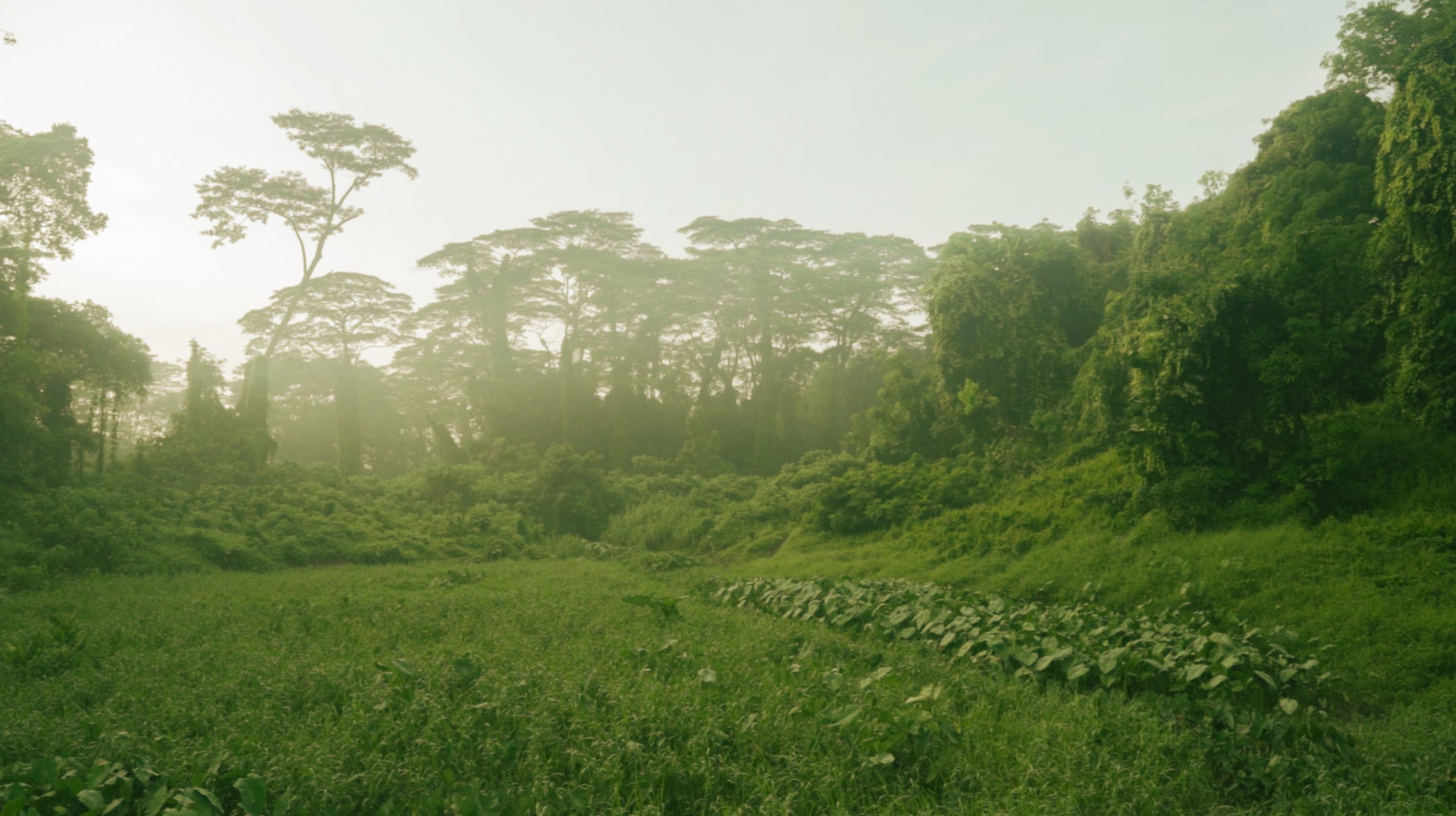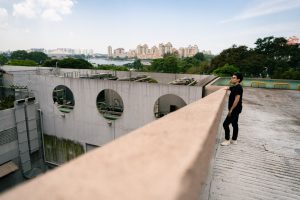Trudging through the maze of vegetation, we brush off waist-high foliage lazily trawling our sides, gingerly setting shoe to soil until we finally emerge into a landscape reminiscent of Jurassic Park. With the ethereal morning mist draped across the valley of lush greenery, it is a marvel that this terrain sits next to a bustling tarmac road.
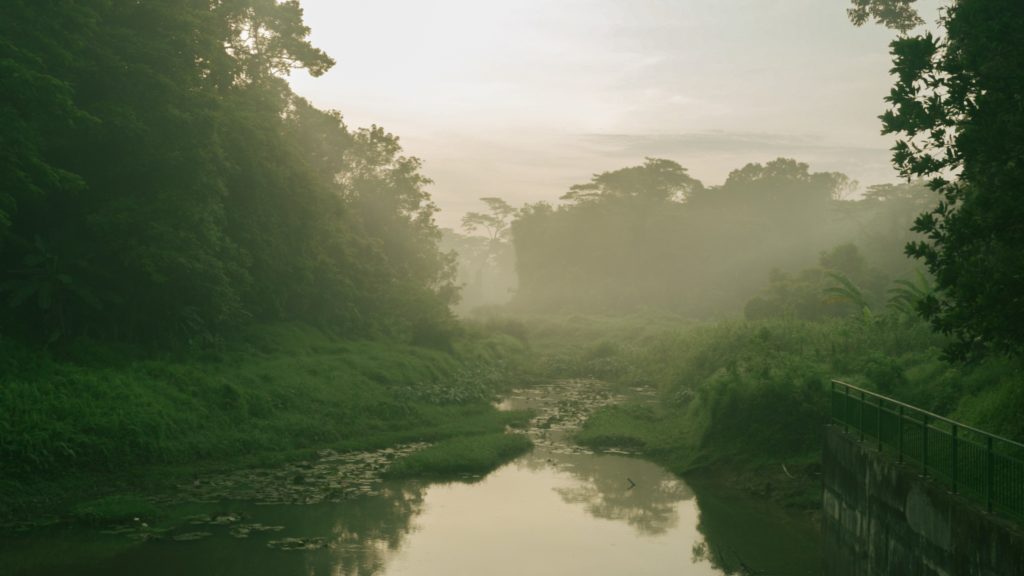
Elliott and Inez, a pair of self-professed nature enthusiasts, have brought me out to trek Clementi forest in the wee hours of the morning. As nature guides and educators, they belong to a burgeoning group of Gen-Z environmental influencers. From Tik Tok dances (“I am a reluctant participant,” says Elliott) to speaking at seminars (cue the recent Singapore Heritage Festival), the lovebirds have taken the cause of championing our local habitats to heart. We’re in Clementi forest today because the couple wants to show me what might be disappearing next.
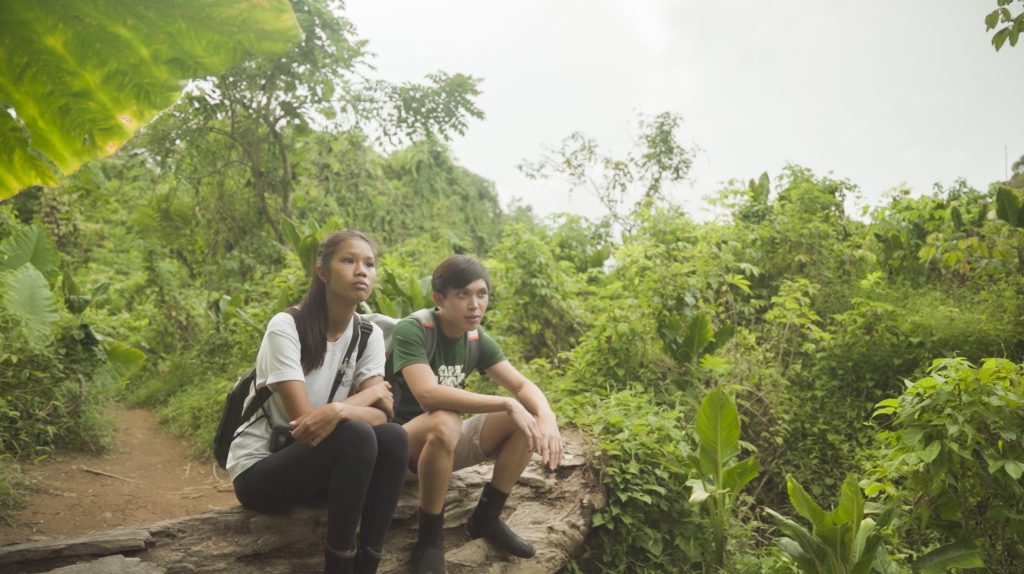
Earlier this year, the outcry over Dover Forest sparked waves of action, from petitions to parliamentary speeches. While a laudable milestone in the uphill battle to protect our green spaces, Elliot maintains that Dover is a unique case study.
“Dover was unprecedented because prior to this, so many of our forests were disappearing but not as many people cared about the issue. But with Dover, it was the residents living in the area who didn’t want to see it go. That’s not always the case with other green spaces,” Elliott muses.
Inez nods in agreement. “Have you heard of Tengah forest?” she asks, to my puzzlement.
Tengah forest is (or was) an approximately 700 hectares patch of greenery teeming with life, housing predators of the air such as the near-threatened Grey-headed Fish Eagle, as well as land troopers like the critically endangered Sunda pangolin. Sitting snugly between the Western Water Catchment and the Central Catchment Nature Reserve, it also serves as an important connector facilitating the migration of wildlife from one forest patch to another.
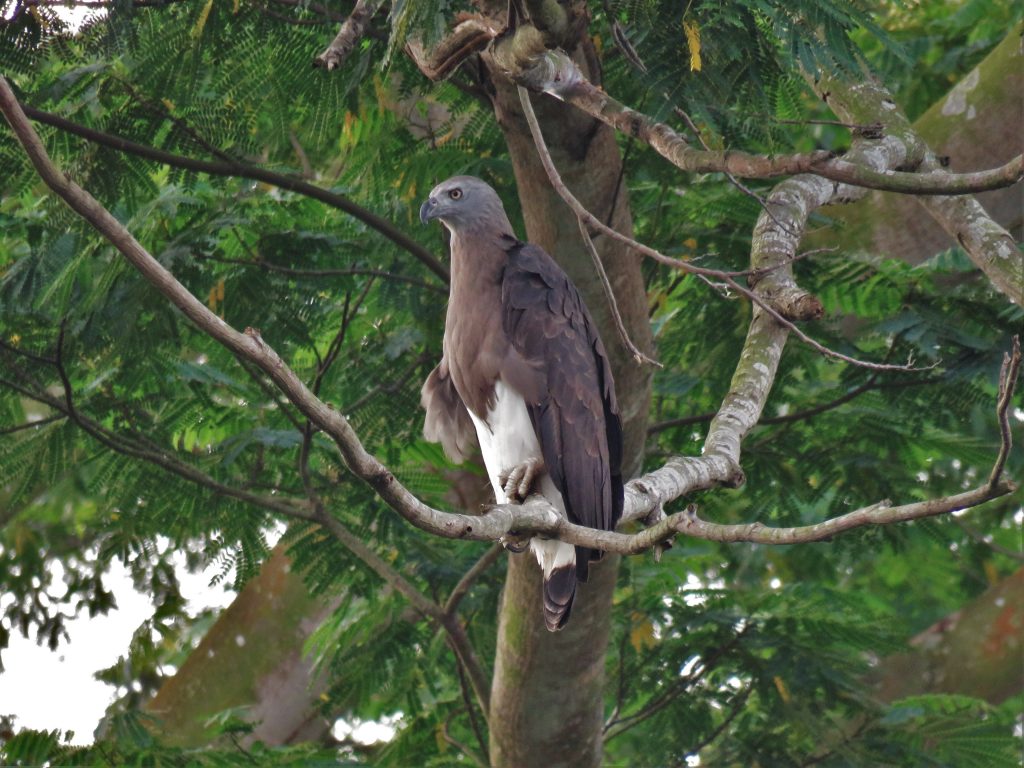
Unfortunately, being located remotely meant that there was little fanfare when it was announced that the forest would soon give way to what was termed the “Tengah Forest Town”, an HDB residential estate resembling the size of Bishan. In fact, slots for the upcoming Build-To-Order (BTO) flats recently opened up in May 2021. Not lost on me is the irony of its name or its tagline where future residents can experience being “At Home with Nature”.
Inez is quick to reassure me that rather than a mercenary bulldozing, there were indeed mitigation measures announced like the setting aside of a 5km long, 100m wide green corridor to ensure connectivity between the catchments, as well as a wildlife shepherding exercise to safely relocate the animals to neighbouring habitats. But can we really heave a sigh of relief and congratulate ourselves on acquiring these concessions?
Woefully inadequate, is how the folks at the Nature Society of Singapore puts it.
The land area of the corridor, which totals only 10% of the original forest or less, is inadequate in accounting for the volume of species present, while the mere 100m width of the corridor will see the slender strip being sandwiched closely by the Kranji expressway on the northern flank and disturbances coming from a dense housing estate on the southern flank.
“We also need to think about the journey once wildlife exits the green corridor,” Dr Ho Hua Chew, vice-chair of the Conservation Committee of the Nature Society, says. Highlighting the fragmented connectivity to surrounding reserves, he elaborates, “Currently there are only segmented green patches here and there, not a complete passageway to safety. In essence, an animal still has to cross the Kranji Expressway to get to their next destination.”
This is why Dr Ho and his team have advocated for building further eco links and preserving two core areas of forest patches on either end of the green corridor. “It’s a pitstop for them to take cover and get back their confidence before pushing on through the corridor,” he explains.
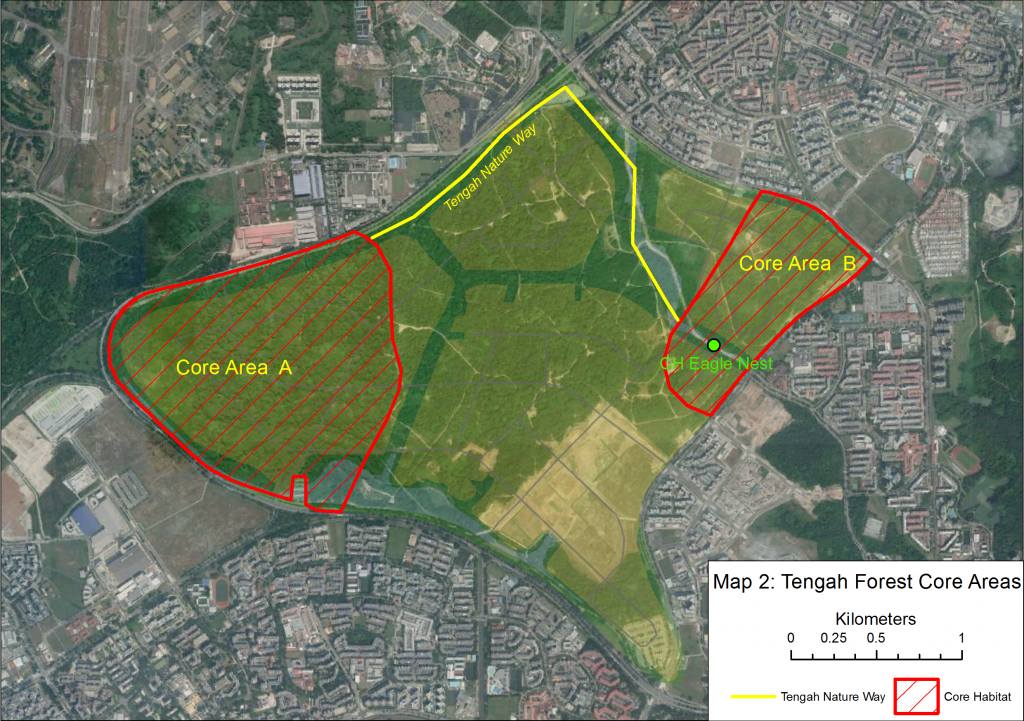
Constantly relocating wildlife is proving to be a feeble solution too. In fact, Dr Ho posits that wildlife may have originally entered Tengah Forest as the carrying capacities of other forests were likely exceeded. As we tear down more and more, we will be left cramming our wildlife like sardines in a can to whatever green space is available. After all, we guided animals out of Lentor Forest into the Central Catchment Nature Reserve, and then, later on, decided to run the Cross Island Line (albeit 70m down deep) through said reserve.
As it stands, the current fate of Tengah is uncertain, a common refrain when it comes to most of our forests.
The obscurity of our natural spaces is what drives Elliott and Inez to frequently lead tours to uncommon habitats like forests or coastlines, in hopes that getting acquainted with an area would help people care deeply about it.
“People get so stoked just getting to hold a starfish in their hands,” Inez says. “There are actually so many cool things in Singapore that people don’t know about, so I love that I get to help people discover this side of our island.”As we continue our hike, they point out the richness of biodiversity with ease. Did you hear that? It’s the straw headed bulbul, Elliott says breezily. Elsewhere, Inez is admiring a leaf she’s picked up from the ground. It’s not every day you hear someone describe a leaf as cute.

To understand more about the success of mitigation measures, I ask about efforts at re-planting when a forest is cleared, such as in the recommendations following the Cross Island Line saga.
“It takes a long time to engineer a regrowth forest, and no matter how well you do it, you can never get back the same makeup of biodiversity. It’s effective if you’re talking about carbon offset, but it’s a loss on the biodiversity front,” Elliott patiently explains. A carbon offset is a reduction in emissions of carbon dioxide or other greenhouse gases to compensate for emissions made elsewhere.
My interest is piqued on this topic of biodiversity. To the layman, the case for biodiversity just seems like preserving for the sake of variety. Is it just so we have cool things to gawk at?
Both of them react viscerally to my insinuation, to which Inez flatly responds, “if there’s no biodiversity, we’ll all die.”
The two try to paint it for me simplistically.
Bats, like the fruit bat or the cave nectar bat, are indispensable in the pollination of the nation’s favourite fruit (subject to personal discretion)—durian. Wipeout its habitat, lose the bat, and we will have no more green, thorny shells to crack open.

To find out more, I turn to Dr Andie Ang, a Mandai Nature Research Scientist and President of the Jane Goodall Institute (Singapore).
“Firstly, I just want to say that tree planting is great, it really is,” she says with gusto over our Zoom meeting, hands clasped anxiously to reassure me she is not a tree-planting hater. “But planting a million trees is not the same as keeping a million trees.”
Newly planted trees are usually scattered around different landscapes, such as in a housing estate or by the roadside. The outcome is far from replicating the dense, rich environment of a forest primed to support existing biodiversity. From acting as a natural water filter against flash floods to curbing sweltering temperatures, the benefits of strong ecosystems are endless.
“We have to look at forests as a whole and not in compartments. You cannot talk about intact forests without talking about the wildlife that lives in the forest. So even if you preserve a green corridor or a strip of greenery, but if it’s an inadequate space for wildlife to really thrive in, that’s not fully protecting our biodiversity,” Dr Ang says.
Dr Ang would know. She has devoted her time to conservation efforts for the Raffles’ banded langur, a jet black monkey whose home has been constantly threatened on our shores.
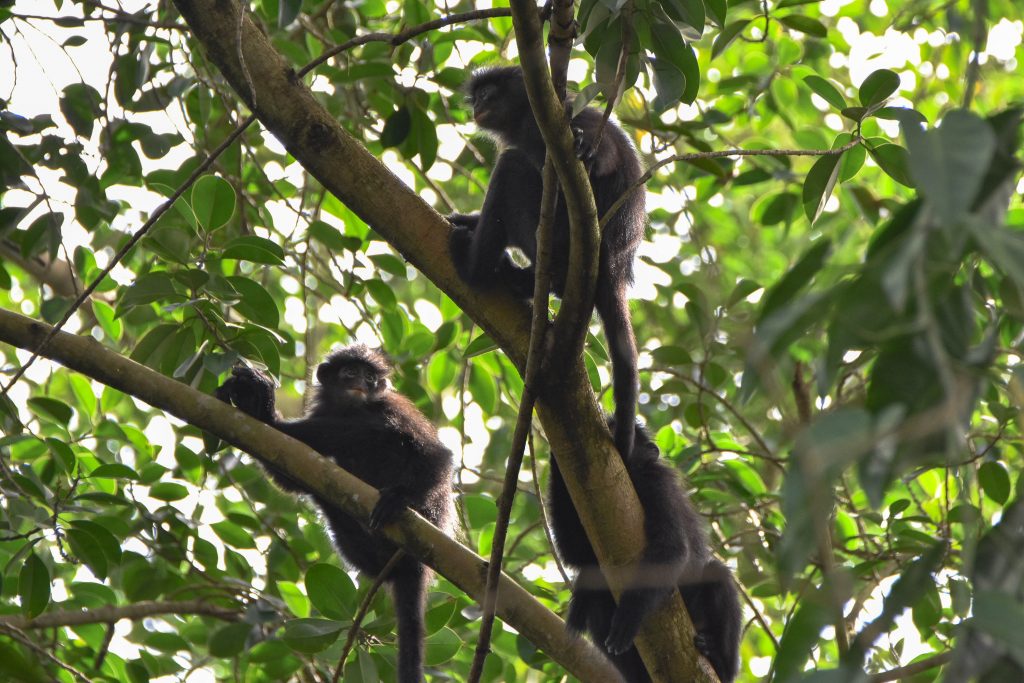
Amid deep sighs, Dr Ang tells me about a roadkill incident of one such langur in 2017 on the BKE. The langur was most likely attempting to cross from the Central Catchment Nature Reserve to the Bukit Timah Nature Reserve, and video footage showed the langur perched on the central divider in the middle of the road, wavering in its course of action.
“It might have tried to cross, realized that the traffic was too busy, tried to go back, and then, bam,” Dr Ang says sadly.
Ironically, the kill spot was only 650m south of the eco-link corridor.
“That’s the thing right, it’s not like animals can read signs telling them that there is a safe corridor further down the road,” Dr Ang laments regretfully. “If we’re removing someone’s home, we need to think about how to provide proper alternative homes.”
Back at Clementi, Elliott is making me squirm with a story on how baby wasps feed inside figs.
“Only certain species of wasps, the fig wasps, can pollinate fig flowers. The wasp mum will crawl inside, lay her eggs and then die. The inside of fig fruits are food for her little grubs, so if you take an unripe fig fruit and peel it open, you’ll see all of them wriggling inside.”

Upon seeing my appalled face, Elliott laughs. “Yeah, it sounds quite gross. But once they mature, they all fly out of the fig fruit, and that’s when we pick it and eat it. And figs, in turn, are important food sources for other animals, like birds, monkeys, even bats.”
Talk about biodiversity.
“I think our generation has a lot of nature influencers talking about climate change, like reducing plastic and all that, but I do think biodiversity has been largely overshadowed,” Elliott quips.
Karl Png, 24, from the Singapore Youth Voices for Biodiversity, is certainly well versed to speak on Gen Z advocacy. A two-year-old organisation, the youth team behind SYVB boasts an impressive roster of advocacy work, from organizing youth consultations and forums to participating in international roundtables.
The idea of advocacy can bear a bitter taste in the sceptic’s mouth, so I question if he gets jaded hearing about these cases with very little fruit over and over again. Does the work put in actually equate to a proportionate outcome?
“Let’s just put it this way,” Karl responds. “I am not certain of the fate of Dover forest, but it’s way better than if it were business as usual.”
As we speak, Karl and his team are in the midst of finishing up an infographic on yet another case of undue clearance at Sembawang Woods, where an 800m section of the North-South viaduct is slated to pass through the forest patch. Karl gives an approving nod to the mitigation measures taken in this case, albeit calling for connectivity corridors to be sufficiently vegetated and widened.
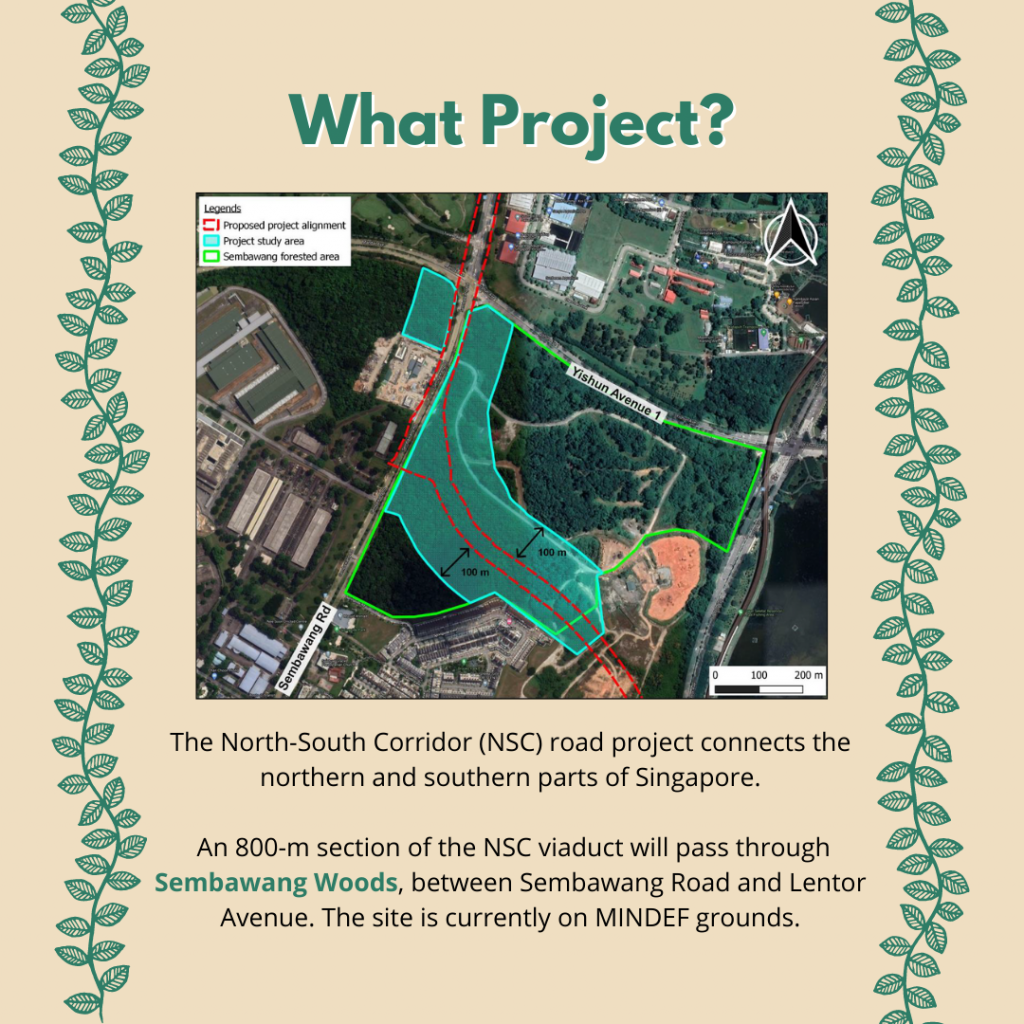
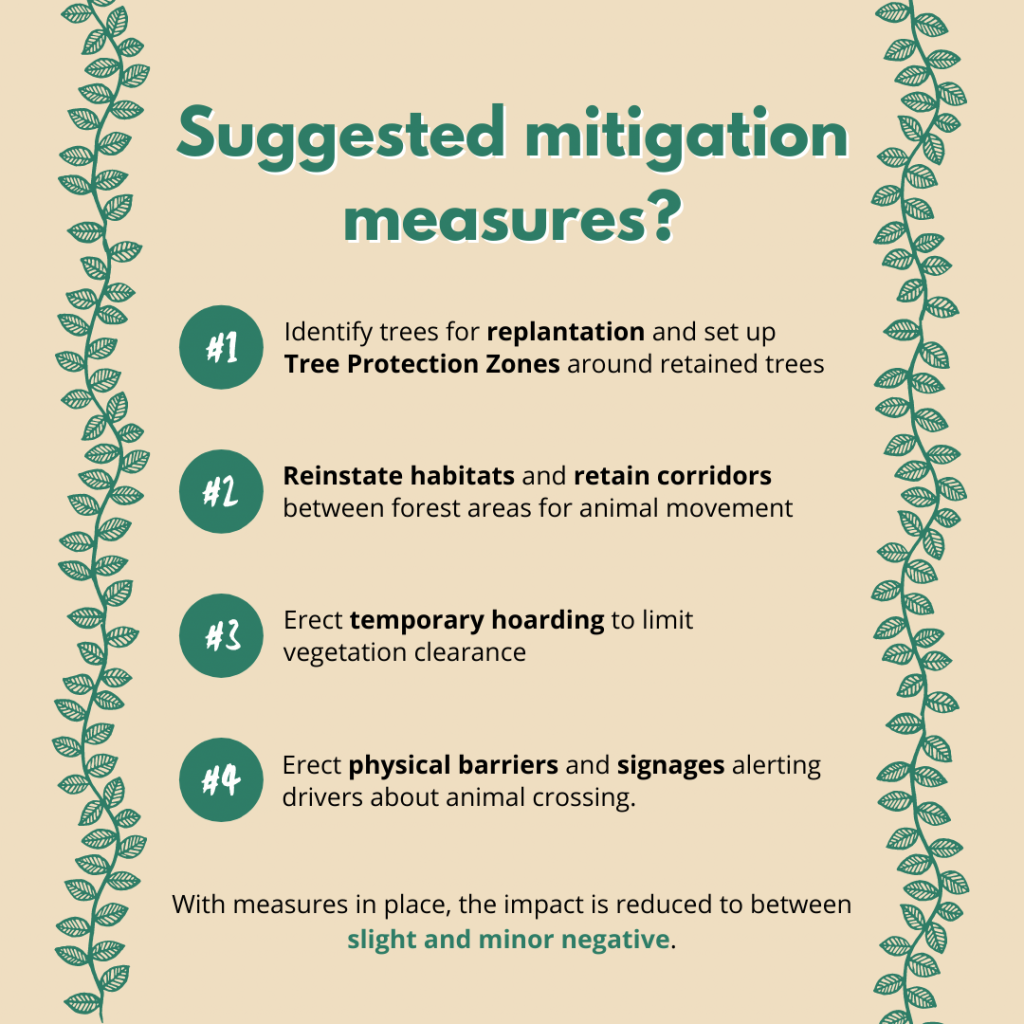
“The thing about biodiversity that people don’t always grasp,” Karl states, “is that we are part of it. It does take a toll seeing spaces get culled all the time, but the motivation comes from knowing that it’s these organisms that feed me and give me clean air and water. It’s that gratitude I have toward nature because of all the underappreciated services it provides.”
Elliott echoes a similar thread. “We always try to frame it as saving wild spaces for animals, but in actual fact, it’s saving these spaces for people too. We always benefit when we preserve natural spaces. I think people tend to forget that until it’s something closer to home.”
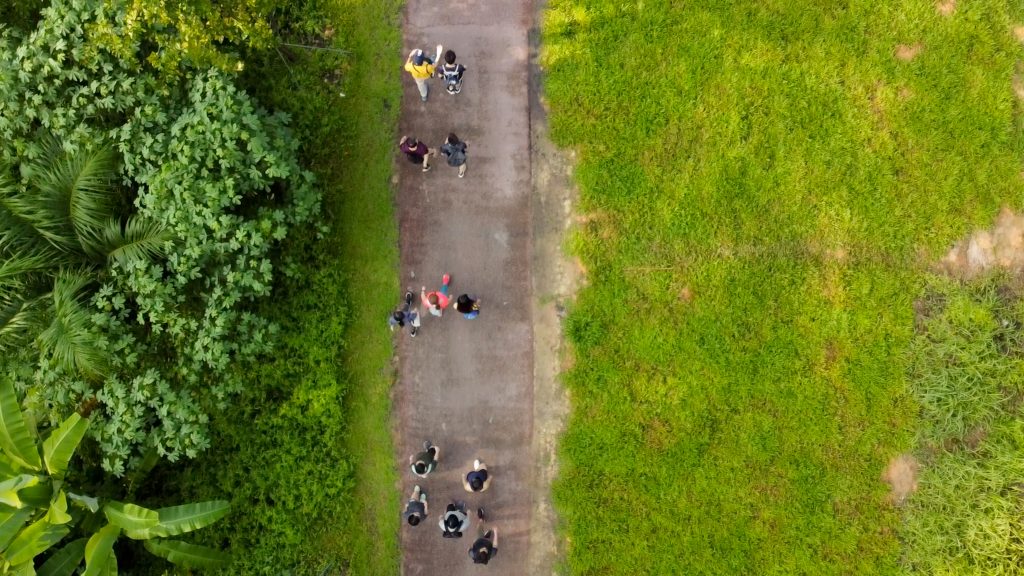
The sky is turning an ominous grey as we near lunchtime, so we decide to head out before the imminent downpour. As we skirt back out onto the main path, construction fences loom on either side, housing excavators donning a faded shade of green. In land-scarce Singapore, how are we to satisfactorily balance conservation with the need for development?
“Land use is a touchy topic,” Karl acknowledges. “We’re not saying you cannot do this or that it’s morally wrong, rather, we’re trying to pose a set of questions that can result in more robust decisions. Have we considered all options of other usable areas? Have we allowed ourselves to study the forest in question?”
For instance, Mr Christopher de Souza, MP for the Holland-Bukit Timah GRC, had previously pointed out the availability of neighbouring, vacant sites in the Ghim Moh area as a substitution to clearing Dover Forest.
Similarly, Elliott and Inez clarify that their stand isn’t a brusque opposition to development, but rather the need for a more thoughtful and intentional approach to it. “In fact, when there’s clearance to be done, I actually think we might not always need to preserve the whole area,” Elliot offers. “But we hope that there can be consultations at the start, not just when the clearing happens and consultations are only to salvage or remedy.”
Dr Ang thinks there needs to be a mindset overhaul on the ways we approach land use. “Rather than mitigating the impact, it’s about not even incurring this impact. I know it’s challenging to say you want to be involved right in the beginning, but I really feel it’s a missed opportunity to not be more consultative at the start.”
The recent erroneous clearing of Kranji Woodlands is a testament to the mantra of too little too late. Adding on to the list of umbrages is the shock clearing of Lower Seletar Reservoir, a move that the Nature Society of Singapore has indicated they were uninformed about.

Within the nature community, calls for an Environmental Impact Assessment law, or EIA law, have been circulating as well.
Elliott explains that in the case of Dover, only a baseline study was conducted, which is not the same as an EIA. While a baseline study outlines what kinds of flora and fauna are present in the forest, EIAs assess the impact on the habitat when construction works are made and present recommendations to circumvent those effects. Simply put, knowing what is in the forest does not equate to knowing how it will be affected.
Pointing out the presence of EIAs that have led to mitigation measures in the Cross Island Line and Bukit Batok Hillside Park cases, Inez says, “we’re really gunning for a law that would make EIAs mandatory, and that the findings would be made transparent to the public.”
On the flipside, Dr Andie Ang and Karl are more cautious about the push for legislation. “Do we really have to go down the fine people route?” Karl laments, yet acknowledges that enforcement might be inevitable if patterns of careless clearing persist.
“What I would really like to see is more education upstream,” Dr Ang counters. “Teach about our local forests in the kindergartens, so that there is an early appreciation of it. Ultimately, you can only care about the things that you know.”

With all that is on the horizon, do they still feel hopeful?
Across the board, all unanimously agree that the recent attention on green spaces merits great encouragement. Recounting how she recently heard some elderly folk complaining about the Kranji Woodlands clearance at the kopitiam, Dr Ang says, “previously, it was always the converted talking back to the converted, but for the story to reach a 70-year-old uncle, that’s really on the ground.”
“I just hope more people go out into the green spaces near them and enjoy them. Have a stake in our natural spaces, so that when the time comes, you’ll be a voice for it,” Elliott challenges.
“I won’t stop advocating,” declares Dr Ho, “because nature is so fundamental to a meaningful life.” After all, as Dr Ang reminds me, our flora and fauna can and should be coined a part of our heritage. “Our natural heritage is part of our national heritage too, it’s what we have and share. I hope we get to preserve that.”
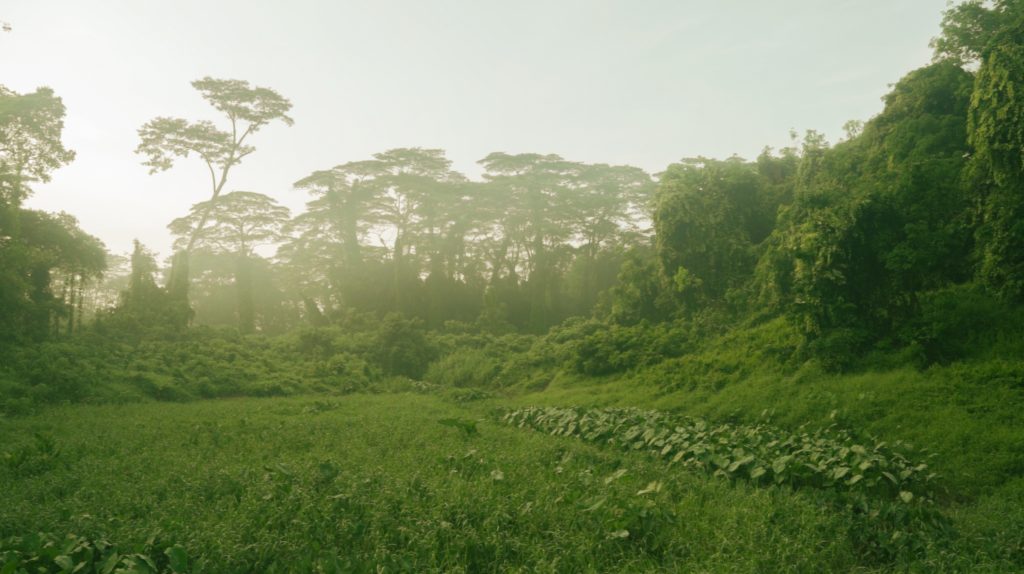
The ecofeminist scholar Donna Haraway talks about the concept of making kin, where kin are defined to be “those who have an enduring mutual, obligatory, non-optional, you-can’t-just-cast-that-away-when-it-gets-inconvenient, enduring relatedness that carries consequences.”1 For Haraway, she found kin in Cayenne, an Australian shepherd dog with whom she had a relationship founded upon mutual respect. She posits that if we have kin with another, then we carry accountabilities and obligations that are steeped in sites of attachment and relationship.
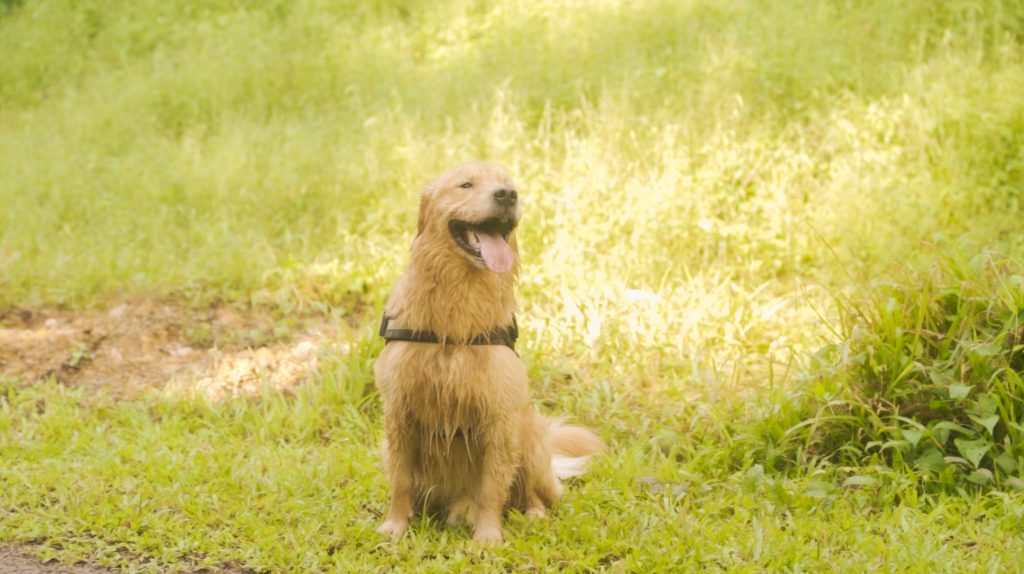
Indeed, we make kin unknowingly with the creatures and critters that surround our atmosphere day in day out, painfully unconscious of the ways in which our ability to breathe and move are, in part, attributed to their continued existence on this planet. We would do well to acknowledge and honour these threads of kinship, treating them with a dutiful reverence and safeguarding them with a discerning will, before these threads are irreparably severed.
Or, as Inez simply puts it, “You got to respect the forest man, these guys were here before us.”
Citations
Paulson, S. (2019). Making Kin: An Interview with Donna Haraway.
https://www.lareviewofbooks.org/article/making-kin-an-interview-with-donna-haraway/

